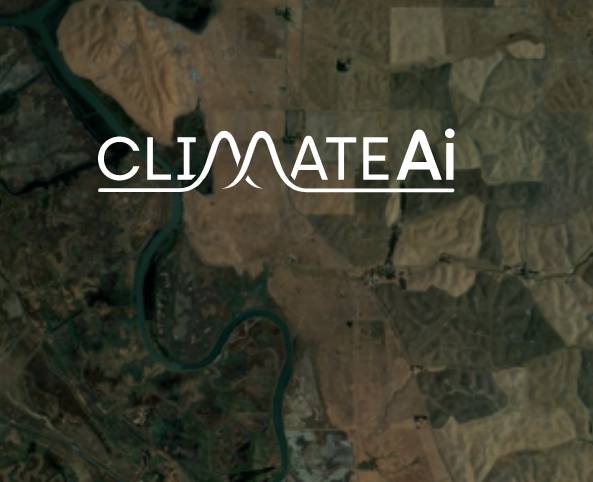Peer-Reviewed Paper Details Way to Dramatically Improve Future Climate Impact Predictions at a Local Scale
San Francisco, NFAPost: ClimateAi, a pioneer in applying artificial intelligence to climate risk modeling, announced its team has solved a critical weather forecasting challenge.
Leveraging advances in AI to improve weather and climate forecasts, ClimateAi researcher Dr. Stephan Rasp and Ilan Price of The University of Oxford have created an innovative machine-learning approach using generative adversarial networks (GANs) trained on global weather forecasts to correct for the biases that exist in current weather models.
After extensive peer review, the report, “Increasing the Accuracy and Resolution of Precipitation Forecasts Using Deep Generative Models,” will be presented at the 25th International Conference on Artificial Intelligence and Statistics (AISTATS) later this month.
ClimateAi Lead Data Scientist Dr. Rasp said going beyond the recent flurry of activity to improve ‘nowcasts’, the new model achieves that same accuracy for forecasts on the horizon of several hours to days.
“By taking a two-fold approach, we can account for systematic errors in the global models and increase the resolution of the forecast so that regional extremes are accurately captured,” said ClimateAi Lead Data Scientist Dr. Rasp.
While a warming, wetter world due to climate change makes weather extremes more frequent and intense, developing accurate regional forecasts is notoriously difficult because of the complex physics driving heavy precipitation and extreme weather events.
Global forecasts can leverage the availability of a great deal of data and weather models, but lack precision and are prone to errors because any small unaccounted-for detail can cause divergence on a large scale. Regional forecasting, on the other hand, requires expensive and time-consuming supercomputers with trained local practitioners, limiting access to rich countries.
The new model downscales global forecasts to be as accurate as a local forecast, without requiring the vast amounts of computational, financial, and human resources previously needed for such a small scale.
Offering accurate local forecasts for precipitation and extreme weather without the traditional (and costly) constraints of current forecasting systems, these findings could provide a new paradigm for forecasting extremes in low-income countries that cannot afford the technology for high-resolution local forecasts.
By training GANs — a subset of machine learning in which two neural networks basically fight and train each other until they arrive at a conclusion — to first look at coarse global weather forecasts and correct for errors, then to downscale the forecasts to a high resolution for local/regional scale, the researchers produced accurate local forecasts (beyond the immediate window of other recent breakthroughs) with the same high resolution and quality as expensive supercomputers’ regional forecasts.
The GANs generate several different images (or potential realizations) that show the different potential scenarios, on timescales of several days, all with equal probability.
For example, rather than simply confirming a “40% chance of rain this week” for an entire region, the new model would empower users to easily answer more helpful questions like: What is the likelihood that it does vs. does not rain tomorrow? Where exactly will it rain? If it rains, will it drizzle all over, pour in one specific spot, or pour in many places but drizzle in others?
While coarse, large-scale forecasts hide all of this important information, this new machine learning approach efficiently brings it all into view.
ClimateAi Lead Data Scientist Dr. Rasp said he current global and regional forecasts lack precision and are prone to errors.
“Artificial intelligence and machine learning breakthroughs are changing weather forecasting, and resource-heavy regional weather models might soon be completely replaced by machine learning approaches. Actionable forecasts will support businesses and governments looking to climate-proof their initiatives and operations,” said ClimateAi Lead Data Scientist Dr. Rasp.
Based on this research, low-income countries – often also the ones most affected by climate change’s impacts – might soon have access to accurate, high-resolution forecasts that provide a climate adaptation tool for agriculture, infrastructure planning and more.
ClimateAi researchers also expect this method to work for longer-range forecasts (weeks, months, years, decades), where the need to increase resolution is even greater.
The authors will present the full findings on March 28 during the 25th International Conference on Artificial Intelligence and Statistics (AISTATS). Read the report on the arXiv pre-print server now.
About ClimateAi
ClimateAi helps companies better manage climate risk with actionable intelligence to design and protect global supply chains.
Leveraging proprietary AI modeling, ClimateAi delivers unmatched weather and climate predictions and conversion into business impact that set a new industry standard for accuracy, precision and scale.
Its first-of-its-kind enterprise climate planning platform quantifies climate impacts, providing business-specific insights, reducing risk, and creating new value opportunities for its customers.
Headquartered in San Francisco, ClimateAi is committed to working with industry leaders to standardize climate risk assessments across supply chains to help businesses adapt and bring climate resilience to our global economy.





